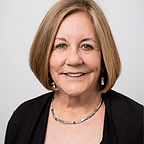Chronic Wounds: How Self-care Can Help Speed Healing
7 min readSep 21, 2020
Optimal self-care for patients with chronic wounds includes dressing changes, good nutrition, and recognizing warning signs of infection.
Chronic wounds aren’t typically something most people think about. If there is a break in the skin or deep tissue, nature takes over and our bodies begin the healing process.
